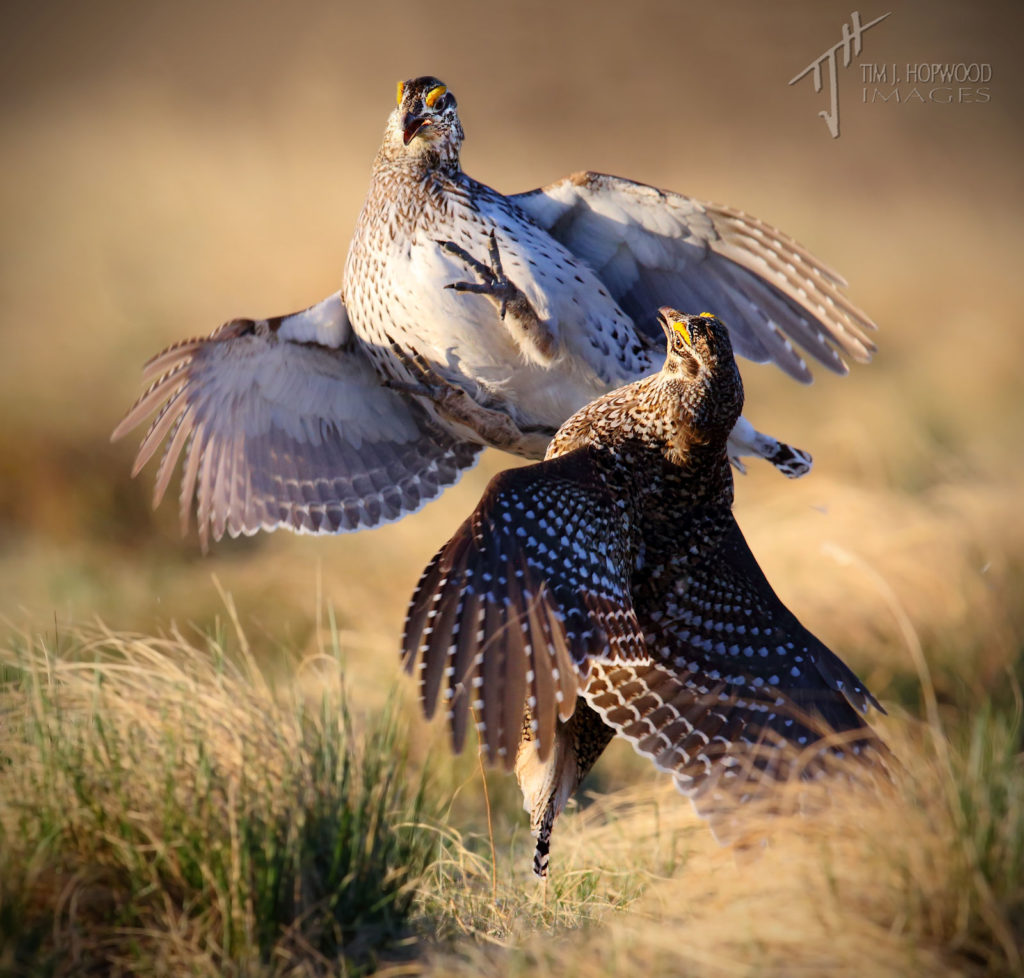 Through the generosity of a rancher south of Calgary, the help of my local birding club and the encouragement of some photographer friends, I had the opportunity to see and experience my first grouse ‘lek’. The grouse species in question was the Sharp-tailed variety, and a lek is “…an aggregation of males that gather to engage in competitive displays that may entice visiting females who are surveying prospective partners for copulation” (Wikipedia).
Through the generosity of a rancher south of Calgary, the help of my local birding club and the encouragement of some photographer friends, I had the opportunity to see and experience my first grouse ‘lek’. The grouse species in question was the Sharp-tailed variety, and a lek is “…an aggregation of males that gather to engage in competitive displays that may entice visiting females who are surveying prospective partners for copulation” (Wikipedia).
After leaving Calgary at the ungodly hour of 4:30am, I met up with my three other birder friends south of the city and together we proceeded to the lek location. Timing was critical as we needed to arrive and be set up in a blind before sunrise so as not to disturb this important ritual in the grouse’s reproductive cycle. By 6am we were safely hidden from view and then settled in to watch and photograph the action.
As the light from the still-below-the-horizon sun began to increase, each minute more and more of the lek was revealed and it soon became apparent that about 30 grouse were in attendance. Interestingly though, I only saw one female – so the boys would have to put on a pretty impressive show to have a chance at winning her interest.
Before too long, individual males appeared to set up ‘their’ position on the lek and then spent the best part of the next 60 minutes dancing, drumming, squaring off against other interlopers, chasing away rivals and not infrequently launching into some spirited tussles.
The dancing involved rotating in circles pointing their tails straight up, head down, wings spread, purple throat patched visible, crowing while beating (or ‘drumming’) their feet very rapidly – quite the sight!
This following images give a typical example of what I saw:
Whenever I saw a ‘fight’ break out (which was signalled by the sound of rapid flapping and grouse jumping in the air), I simply pointed my lens in that direction, focused and held the shutter release down. The action was so fast that it was only later at home when I reviewed my images that the brutality of these short but intense battles became apparent: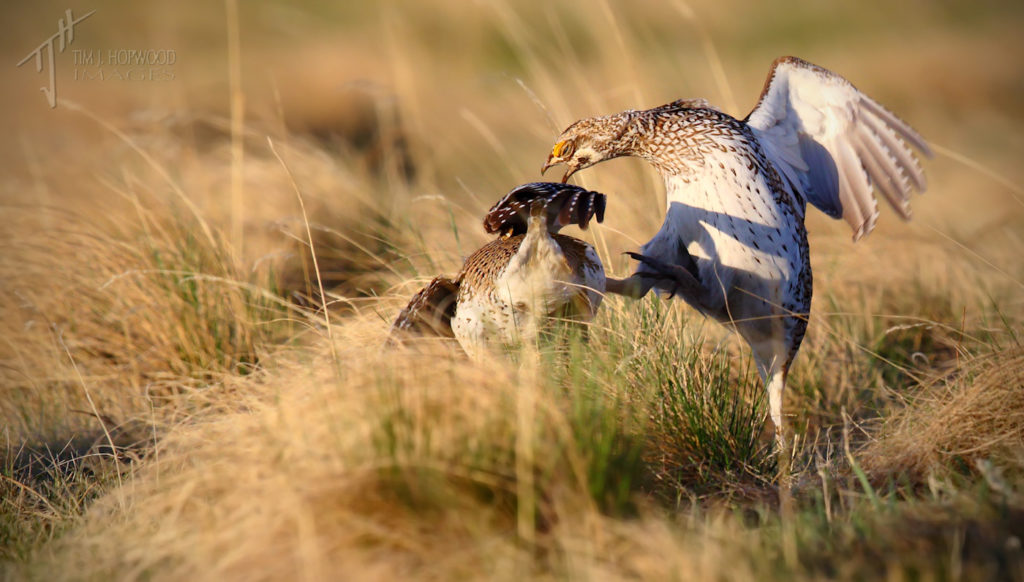
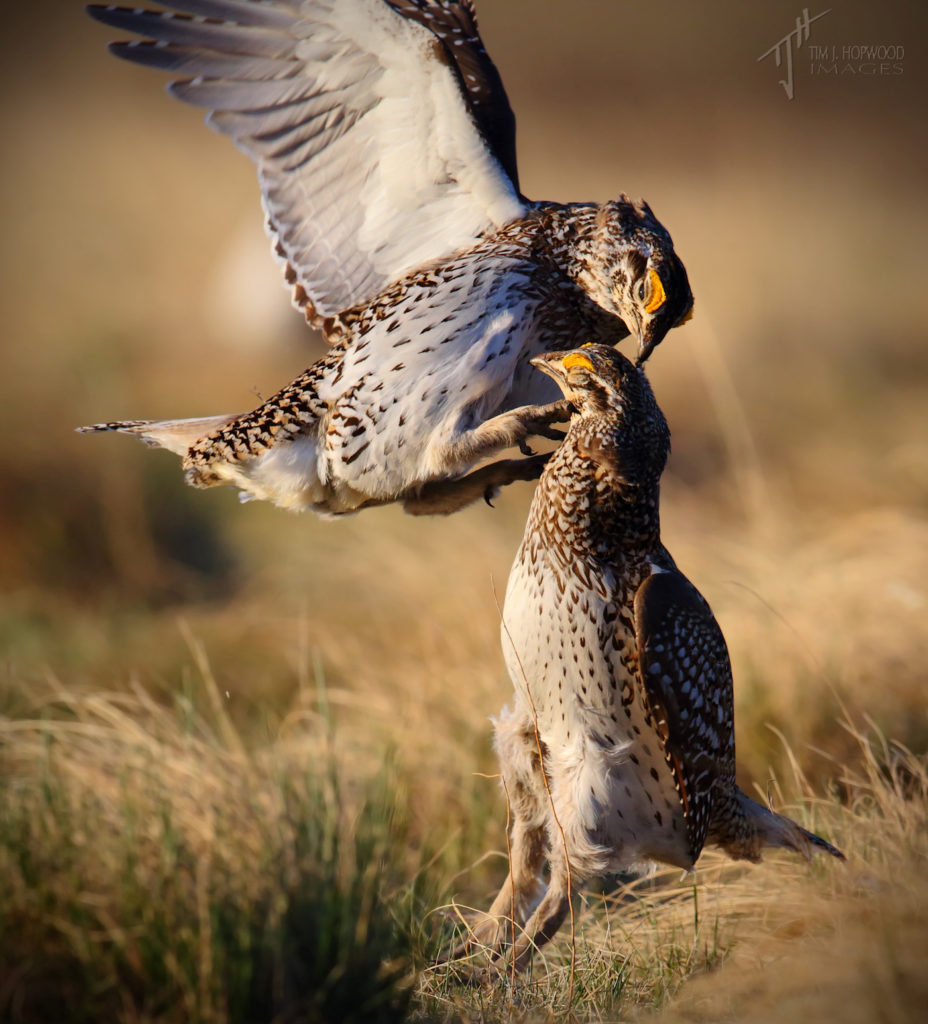
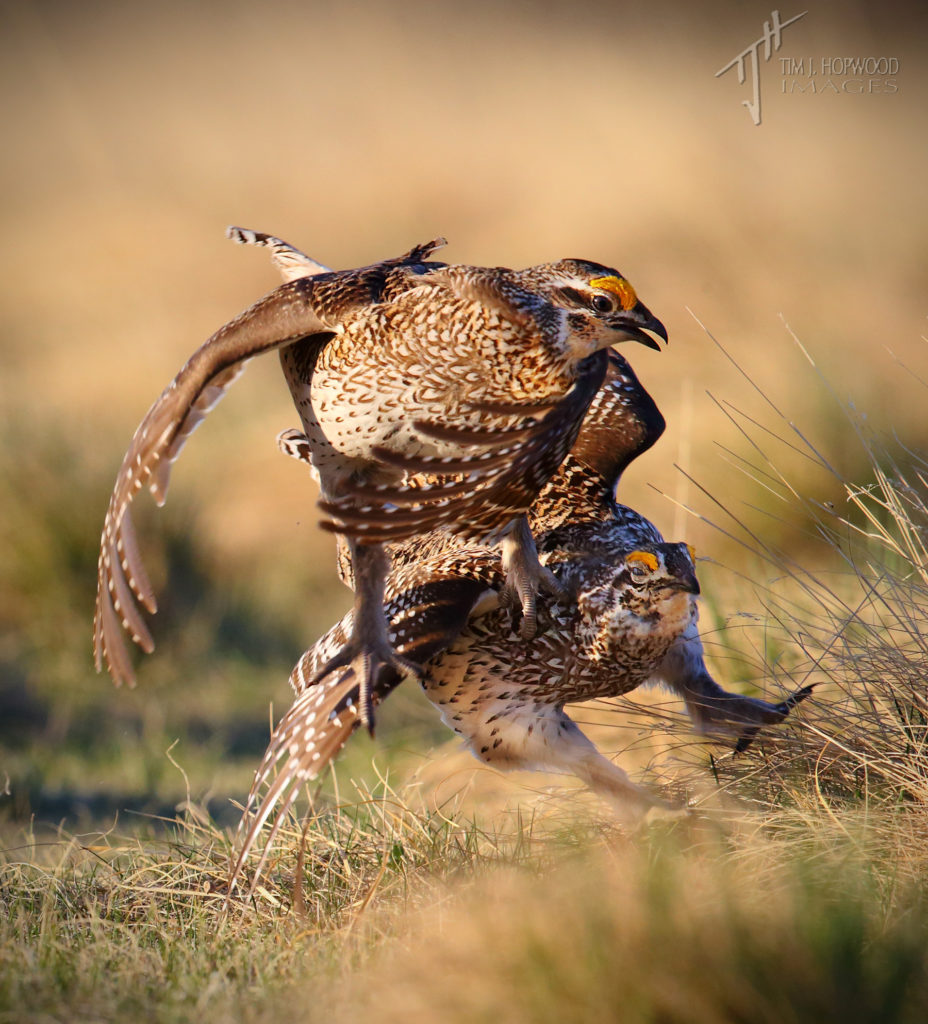
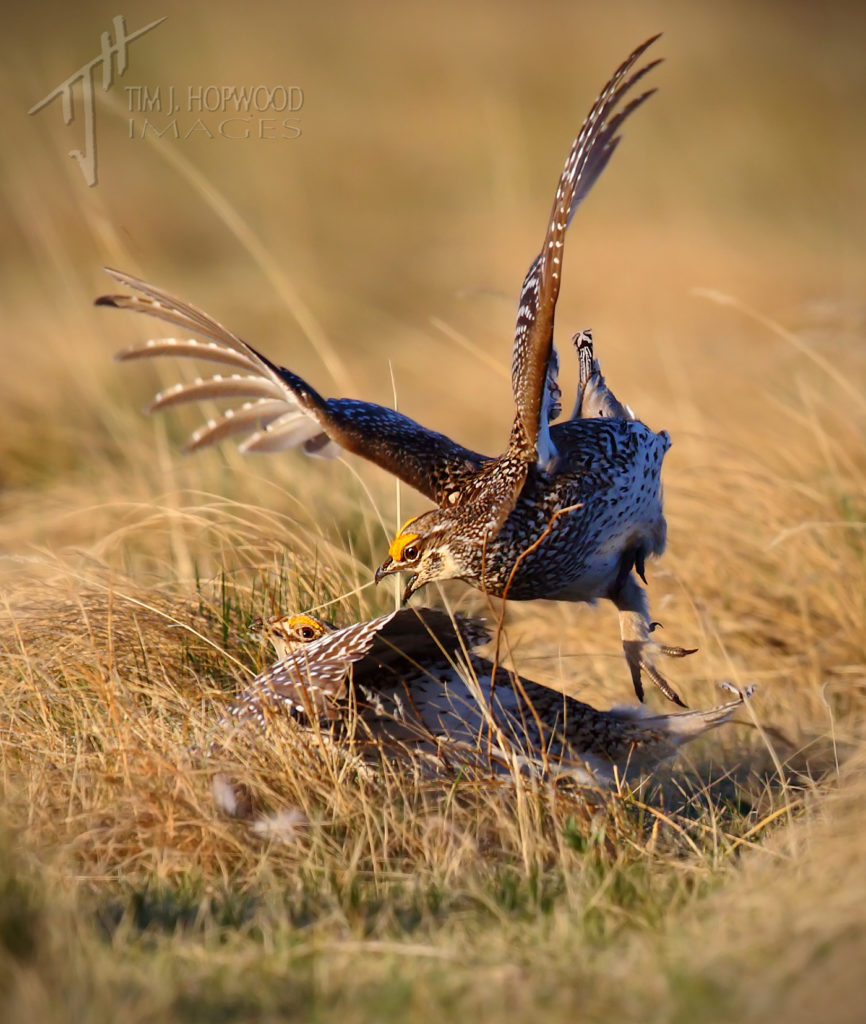
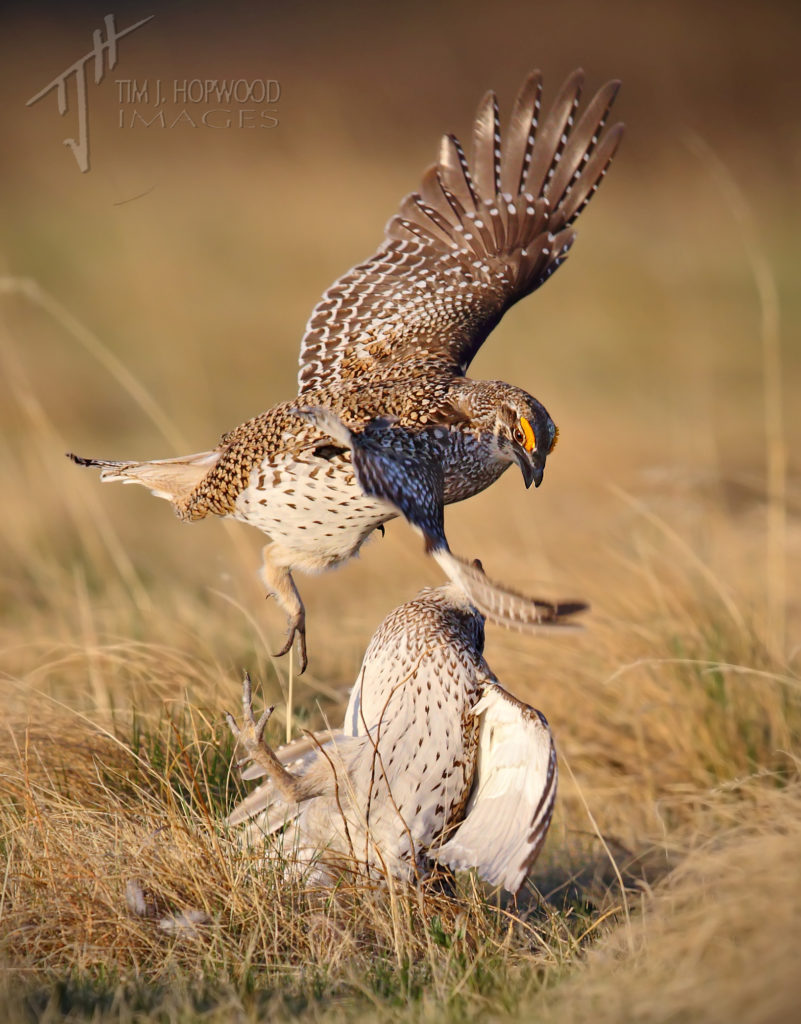
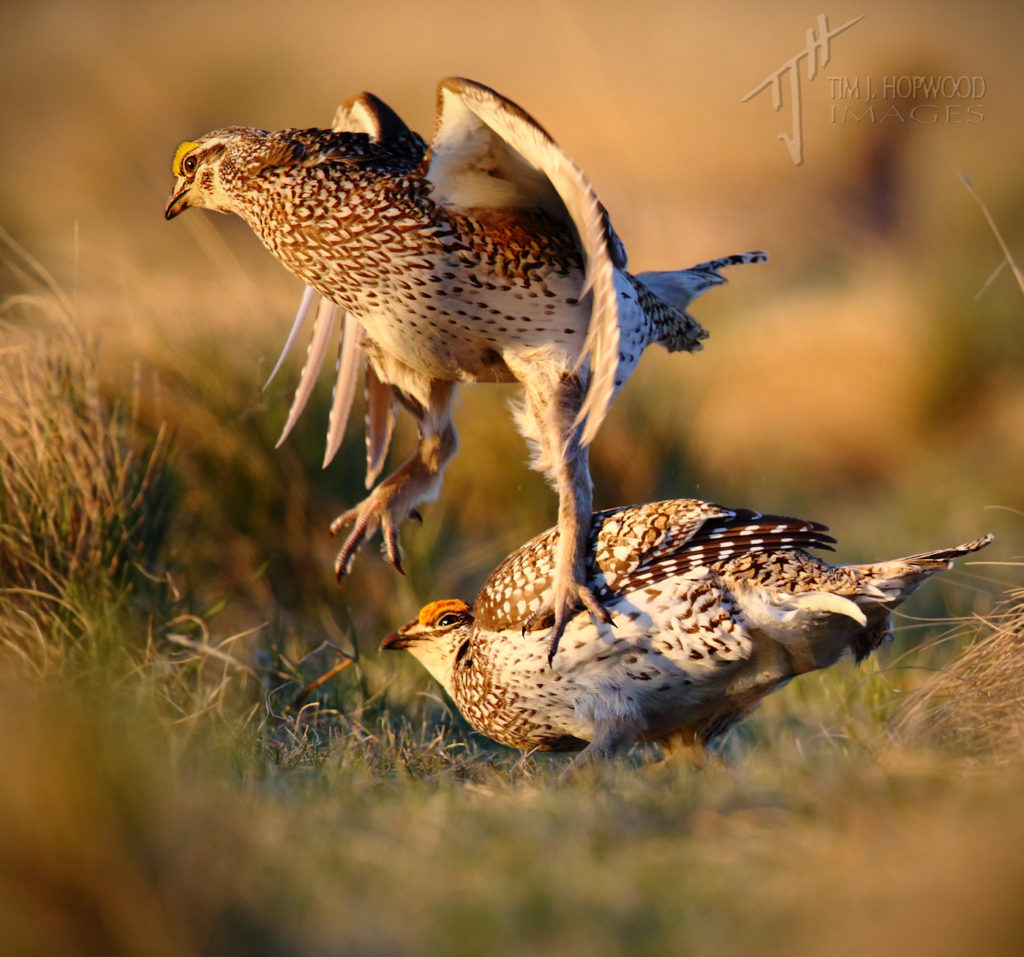 Only two incidents interrupted the lekking, both of which were due to a predator over-flying the lek (first a Northern Harrier, and then a Prairie Falcon which actually made a dive for one grouse), and sent almost all the grouse flying in all directions. Only one or two stayed behind hiding in the long grass, seemingly either too brave or too ignorant to join their comrades!
Only two incidents interrupted the lekking, both of which were due to a predator over-flying the lek (first a Northern Harrier, and then a Prairie Falcon which actually made a dive for one grouse), and sent almost all the grouse flying in all directions. Only one or two stayed behind hiding in the long grass, seemingly either too brave or too ignorant to join their comrades!
By 8am the sun was well and truly up and just about all the grouse had dispersed, and certainly the lekking had come to a conclusion and it was time to emerge from our blind. This was my first proper ‘blind’ experience and I have to say it was nice to have the birds acting and behaving naturally in close proximity as opposed to sneaking up on them.
All in all, a very enjoyable experience and one I’ll long remember! Looking ahead, with a bit of luck next month I’ll have my shots from Vancouver Island ready to post. Cheers for now.



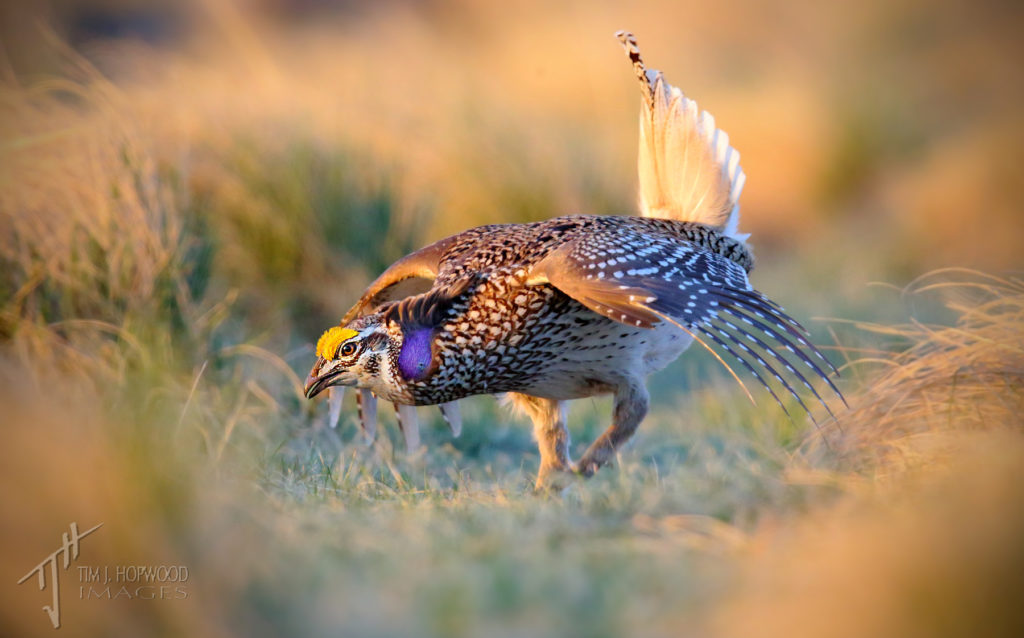
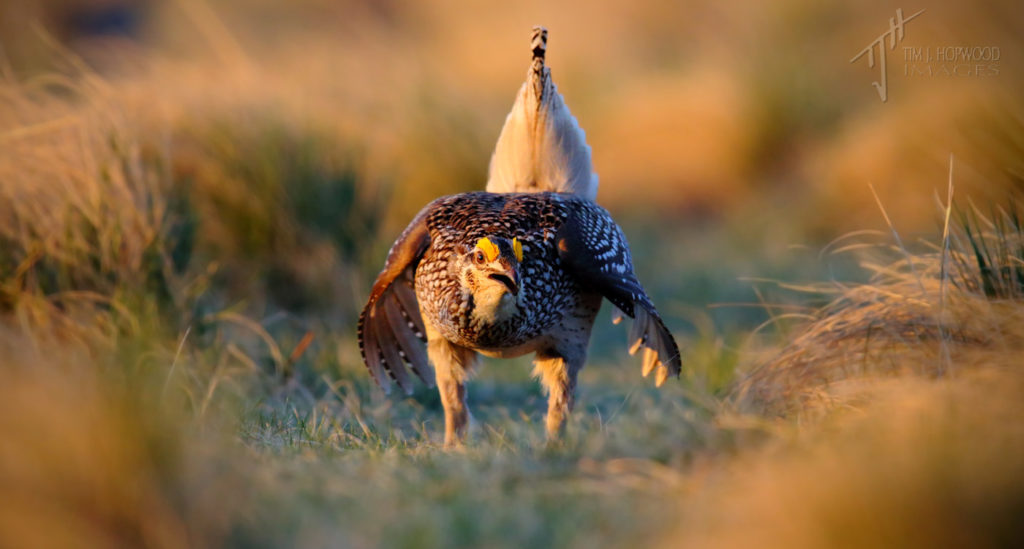
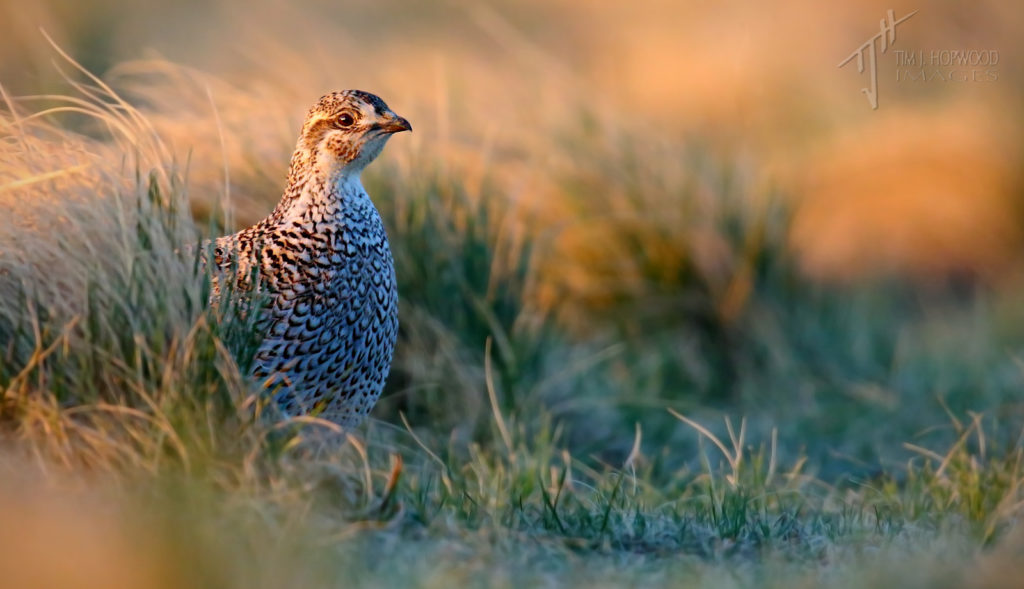
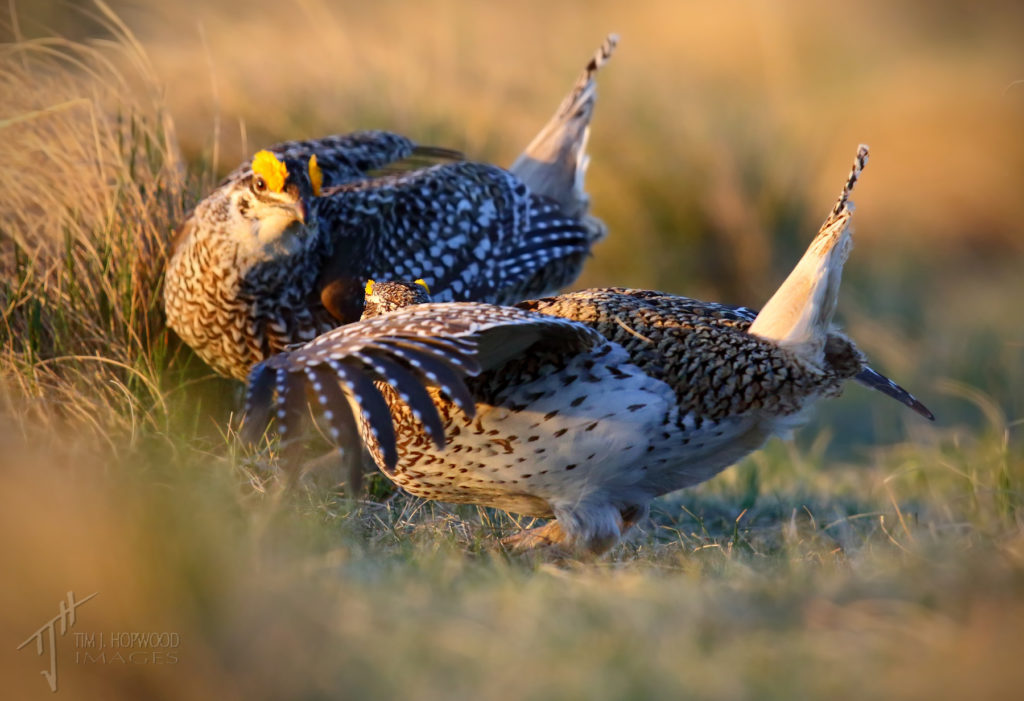
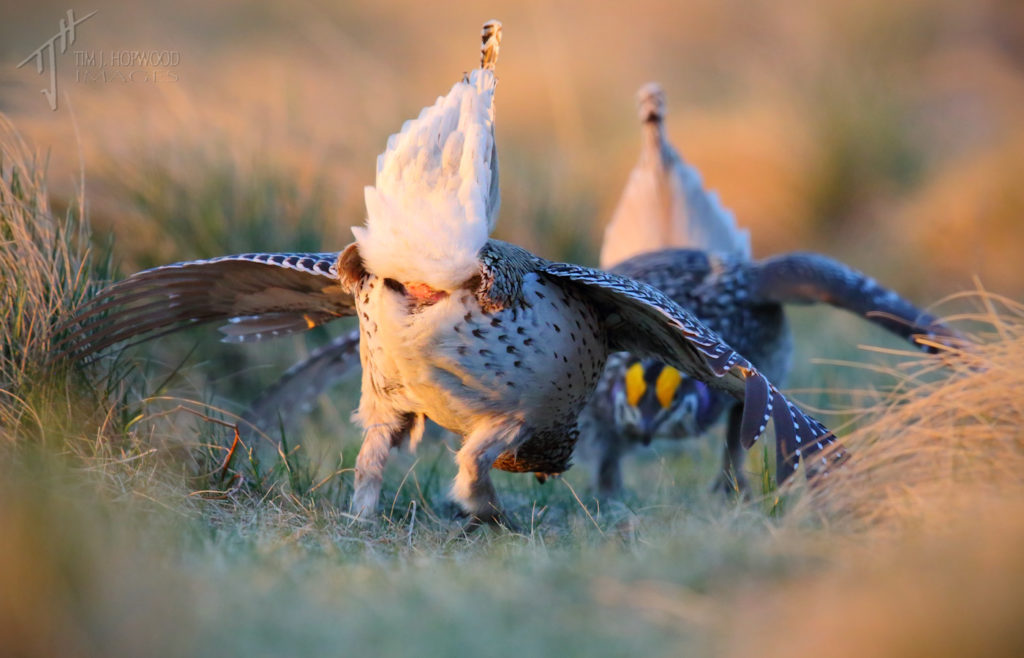
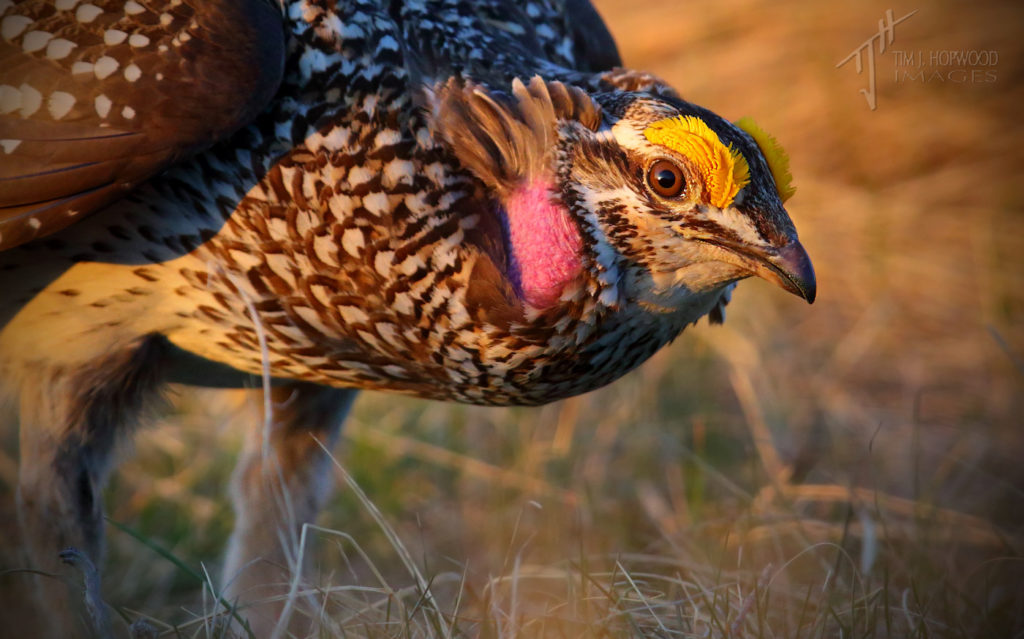
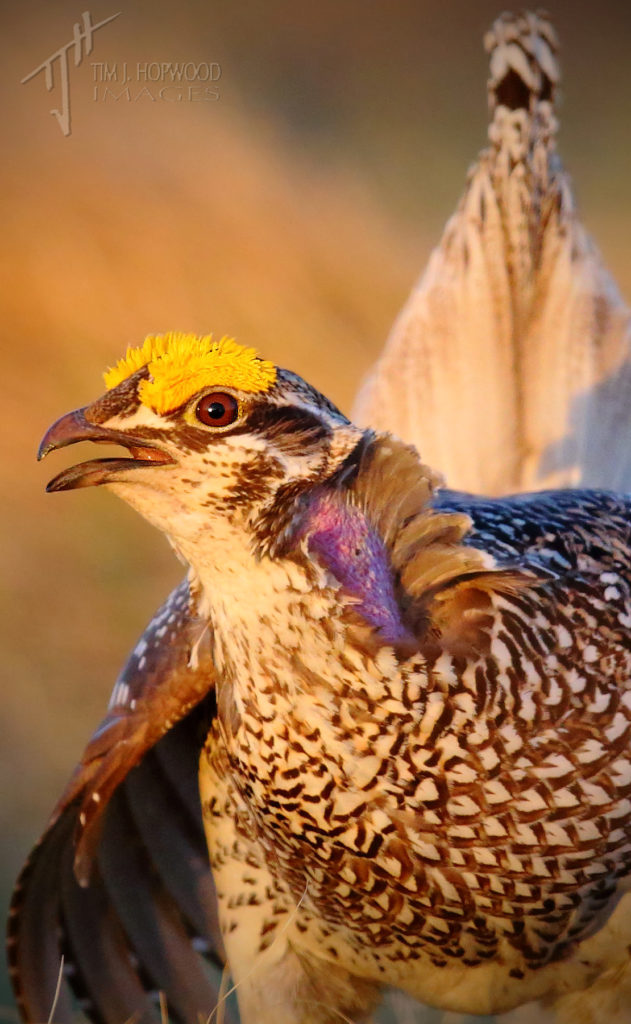
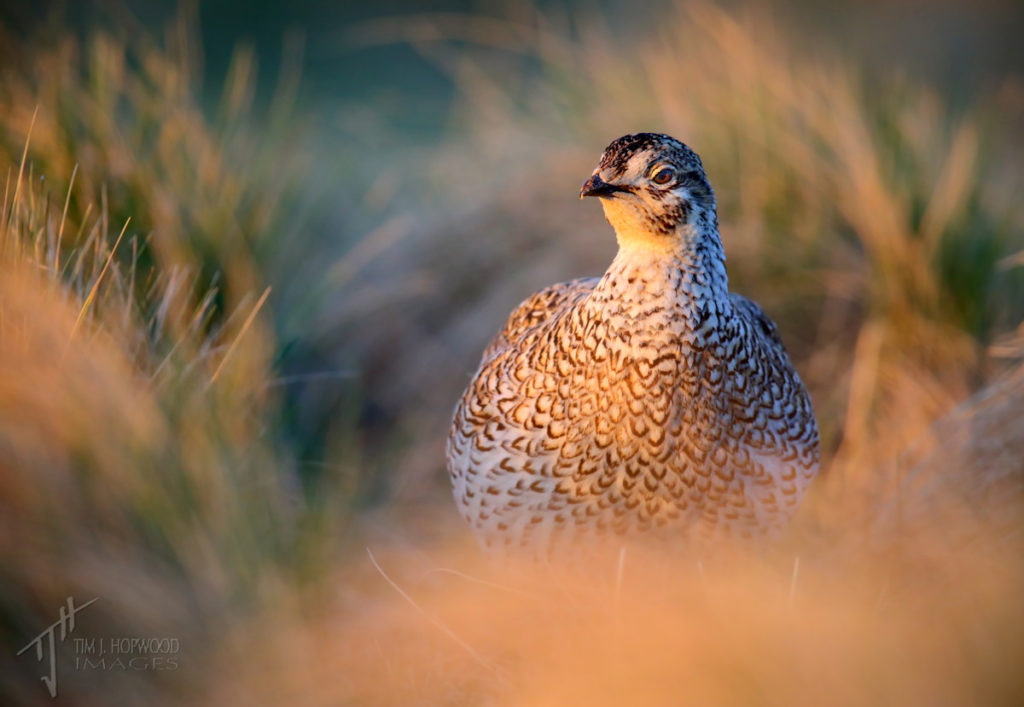
Amazing photography!
Great series of photos and story!